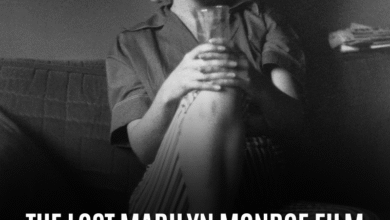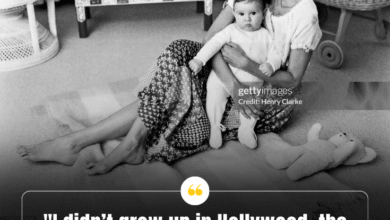The Hidden Truth About Audrey Hepburn’s Ancestry—A Surprising Family Connection You Didn’t Know About!
OPINION: This article may contain commentary which reflects the author's opinion.
Audrey Hepburn, one of the most beloved figures in cinematic and humanitarian history, lived a life defined not just by her grace and talent, but by a deeply fascinating ancestry that shaped her multilingual, multinational identity. Beneath the polished elegance she projected on screen was a rich family history, spanning Dutch aristocracy, English heritage, Czech roots, and even a dash of Jewish lineage — all woven through the complex social and political tapestry of early 20th-century Europe.
A Childhood Rooted in Multinational Ties
Born Audrey Kathleen Ruston on May 4, 1929, in Ixelles, Brussels, Belgium, Hepburn’s upbringing reflected her family’s international connections. She spent her early years moving between Belgium, England, and the Netherlands — a lifestyle that not only exposed her to different cultures but also led her to master five languages: Dutch, English, French, Spanish, and Italian. This cosmopolitan background would later serve her humanitarian work with UNICEF, where communication across cultures was essential.
The Paternal Line: English, Czech, and Jewish Threads
Audrey’s father, Joseph Victor Anthony Ruston, was born in Úžice, Bohemia (now part of the Czech Republic), then within the Austro-Hungarian Empire. His lineage was a unique blend: English, Czech, and at least one-quarter Ashkenazi Jewish, traced through his mother, Anna Wels, who had German-Austrian roots. Joseph’s British citizenship, tied to his father’s heritage, became Audrey’s as well.
In an intriguing — and somewhat questionable — twist, Joseph later altered the family surname to Hepburn-Ruston, claiming descent from the Scottish Hepburn clan and specifically James Hepburn, 4th Earl of Bothwell, the third husband of Mary, Queen of Scots. However, genealogical research casts doubt on this assertion, with no documented link between Joseph Ruston’s family and the historic Scottish Hepburns. Still, this romanticized connection lingered in the public imagination, adding another layer of mystery to Audrey’s heritage.
The Maternal Line: Dutch Nobility and Frisian Roots
Audrey’s mother, Baroness Ella van Heemstra, brought a lineage steeped in Dutch nobility. The Van Heemstra family traced its ancestry back to the 12th century, predominantly rooted in Friesland, a province known for its distinct culture within the Netherlands. Audrey’s maternal grandfather, Baron Aarnoud van Heemstra, served in prominent roles at Queen Wilhelmina’s court and as governor of Dutch Guiana (now Suriname), solidifying the family’s aristocratic status.
Ella’s first marriage produced two sons, making Audrey a half-sister to Jonkheer Arnoud Robert Alexander “Alex” Quarles van Ufford and Jonkheer Ian Edgar Bruce Quarles van Ufford. Surrounded by Dutch aristocratic traditions, Audrey’s early years were steeped in a world of estates, portraits, and formalities — a world that would be dramatically upended during World War II.
British by Law, Dutch by Heart
Although born in Belgium and raised partly in the Netherlands, Audrey held British nationality due to her father’s citizenship. At the time, Dutch law did not allow women to pass their nationality to their children — a rule changed decades later. Nonetheless, Hepburn often described herself as half-Dutch, especially given her strong cultural and emotional ties to her mother’s homeland, where she lived through the Nazi occupation and witnessed the horrors of war firsthand.
Family Fractures and Personal Resilience
Audrey’s parents married in Batavia (modern-day Jakarta) in 1926 but separated in the mid-1930s, with Joseph Ruston leaving the family when Audrey was just six years old. His later involvement with Fascist groups distanced him further from his daughter’s life. Although their relationship was strained, Hepburn reconnected with him later in life, providing financial support until his death in 1980 — a testament to her enduring sense of duty and compassion.
In contrast, her bond with her mother, Ella, remained strong. Ella, despite her own complicated past including sympathies toward fascism early in the war (which she later regretted), was a pivotal figure in Audrey’s upbringing, supporting her artistic ambitions while navigating the challenges of postwar Europe.
Myths and Misconceptions
Over the years, misconceptions about Hepburn’s ancestry have persisted. She occasionally described herself as “half-Irish, half-Dutch,” though no verified Irish ancestry exists in her family tree. This myth likely stemmed from confusion over her father’s fabricated Scottish Hepburn connection. Another frequent misunderstanding is the assumption that she was related to actress Katharine Hepburn — a claim entirely untrue, as the two shared no familial ties.
A Legacy Shaped by Many Worlds
Audrey Hepburn’s ancestry was as extraordinary as her life. The blend of English, Czech, Jewish, Dutch, and Frisian influences helped mold a woman who was as comfortable navigating Hollywood’s golden age as she was advocating for starving children across the globe. In embracing the complexity of her heritage, Hepburn embodied an elegant resilience that continues to inspire generations around the world.



